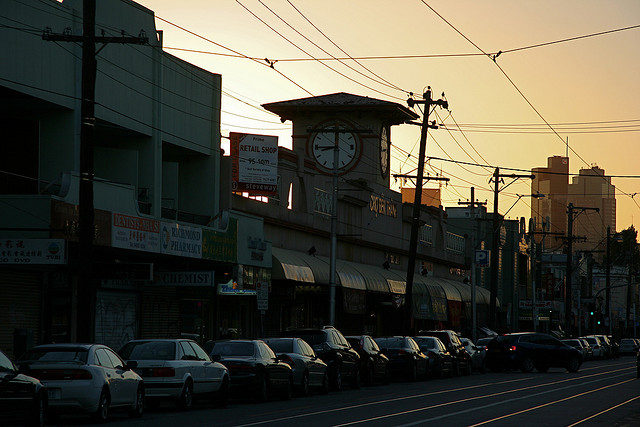by Katie Coulthard | @coulthard_katie
The nurse’s colleague offers sympathy but the look of exhaustion on her face says a thousand words. The topic of conversation of course, is clear – drugs. “It took four male doctors to hold him down, I just didn’t know what to do,” the weary nurse sighs. She inhales her cigarette and leans against the brick wall of an alleyway in Melbourne’s inner east.
This is Richmond, where gentrification, hipsters and toast cafes clash with syringe filled laneways and some of the city’s most well-known drug hotspots. Although the Yarra City’s façade has modernised, its decade-long battle with drug use has shown very little change.
Many believe Australia, and particularly Victoria, has shaken the problem of visible substance abuse and our biggest problem nowadays lies with the ‘ice epidemic’ behind closed doors.
Mass campaigns throughout the 90s involving police, Melbourne City Council, media and the justice system worked to rid CBD streets of the struggling, hollow-faced men addicted to heroin, a drug so deadly, overdose rates outnumbered the national road toll. But don’t be fooled.
While the city appears to have cured the social problem, take a trip to Richmond’s Victoria Street and reality strikes. Widespread heroin and opioid addiction continues to thrive in a new streetscape. Although numbers have dwindled, the long-term issue has simply moved elsewhere, out of sight and out of mind.
The traffic clad streets are some of the busiest in Melbourne, home to the city’s largest Vietnamese community and bustling hospitality trade. Highrise, shiny new apartment blocks shadow a network of laneways and no-through roads.
“You’ve got all the ingredients there for a thriving drug market and it’s never going to leave. People come from all around Melbourne to buy their drugs there,” says Yarra Drug & Health Forum CEO Greg Denham.
Despite the valiant efforts of support services and health care providers, drug users continue to suffer damaging effects and overdose at disproportionately high rates. According to the Australian Drug Information Network, there were 5.21 ambulance attendances related to heroin in metropolitan Melbourne per day in the 2012/2013 period. Experts suggest these numbers have likely risen.
Socially excluded from society and ignored by passersby, the future for street users is grim, but there may be a solution to help both them and surrounding communities alike: safe injecting facilities.
It’s a confronting concept. The idea is users have a safe place to inject or ingest their drugs in the presence of medical professionals who are on hand if the user suffers an adverse reaction or overdose. Although effective in reducing the impact of drug use, there are only a handful of these centres throughout the world. One of the world’s best is Sydney’s Medically Supervised Injecting Centre (SMSIC) situated in the heart of Kings Cross.
Designed to improve the safety of the Darlinghurst area, the centre was installed as a trial in 2001 despite much protest and controversy. 14 years later, it’s a permanent fixture and continues to save countless lives.
Miranda St Hill, Operations Manager at the centre says staff have treated nearly 6000 overdoses with not one death on site since opening the doors.The centre sees a staggering 170 clients a day. St Hill says it can reach up to 300 at times.The service is broken up into stages: assessment, injection and recovery. During the recovery stage, staff provide non-judgemental support and take the opportunity to encourage their clients to engage with other health services, such as drug and alcohol counselling.
While the NSW State Government remain in support of the service, St Hill admits changing society’s perception of the centre is a constant challenge. Despite popular belief, it’s no Walter White drug den. The rooms are clinical, sterile and staff do not supply drugs or allow deals to occur within the building.
“What most people fail to understand is why people seek our help,” she says.
“Once people are truly addicted, they’re not seeking a rush or sense of euphoria. They’re seeking to avoid the horrors of withdrawal. They don’t want to die”.
SMSIC have worked hard to improve community sentiment towards the service and their clients. According to a recent survey, it appears education and engagement with the local area has been successful.
70 per cent of Kings Cross business owners and 75 per cent of local residents are in support of the facility. The answer seems clear for Victoria. Build an injecting centre and Richmond will reap the benefits, however our state isn’t as progressive as our fellow counterparts.
In 2012, Yarra City Council voted in favour of a trial injecting facility in North Richmond. The proposal required support and funding from the then Coalition Government. It was rejected immediately. In February this year, Labor Premier Daniel Andrews dismissed calls for a facility and said he wouldn’t break an election promise by changing drug laws.
Many Richmond business owners and residents also oppose the idea, suggesting an increase in police presence is more deserving of funding. There is also a common belief safe injecting centres encourage users and condone drug crime.
For support agencies like the Yarra Drug & Health Forum, the reluctance, especially by the government, is frustrating. Greg Denham says implementing a trial isn’t a complicated process.
“It could be done tomorrow. It could have been done five years ago and people would now be saying ‘so what?’” he says.
“All the evidence stacks up well and there’s nothing to suggest this is a bad idea.”
Image: flickr/macinate


